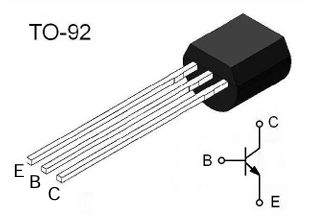Date:2025-06-24 Categories:Product knowledge Hits:280 From:Guangdong Youfeng Microelectronics Co., Ltd
A high-frequency transistor is a semiconductor device that can operate at high frequencies, mainly used for amplifying and switching high-frequency signals. High frequency transistor have a wide range of applications in wireless communication, radar, television, wireless networks, and other fields. high-frequency transistor
1、 Composition:
A high-frequency transistor consists of three main parts: emitter, base, and collector. These three parts are formed by doping different types of impurities into semiconductor materials (usually silicon or germanium). According to different doping types, transistors can be divided into NPN and PNP types.
2、 Characteristics:
1. High frequency response: High frequency transistor can operate at frequencies up to several GHz.
2. Small size: In order to reduce parasitic capacitance and improve frequency response, high-frequency transistor are usually smaller than low-frequency transistors.
3. Low noise: In high-frequency applications, low noise is a very important characteristic.
4. High gain bandwidth product: The gain bandwidth product (fT) of high-frequency transistors relatively high, which is an important parameter for measuring their amplification ability at high frequencies.
5. Optimized structure: In order to improve frequency performance, the base region of the high-frequency transistor is very thin to reduce the transport time of charge carriers.
3、 Principle:
The working principle of high-frequency transistor is similar to that of ordinary transistor. When an appropriate voltage is applied between the base and emitter, minority carriers will pass through the base and be collected by the collector, thereby controlling the collector current. In high-frequency applications, the design of transistors should ensure that the transmission time of charge carriers is as short as possible to reduce signal delay and phase distortion.

Previous: Classification, Structure, and Principle of MOSFET